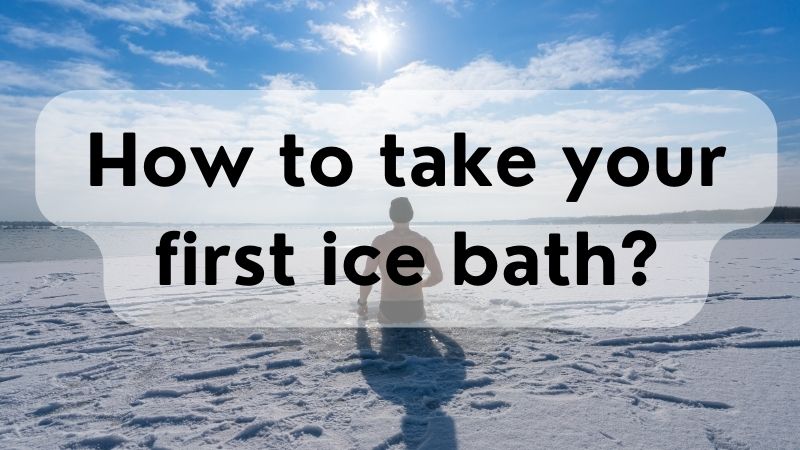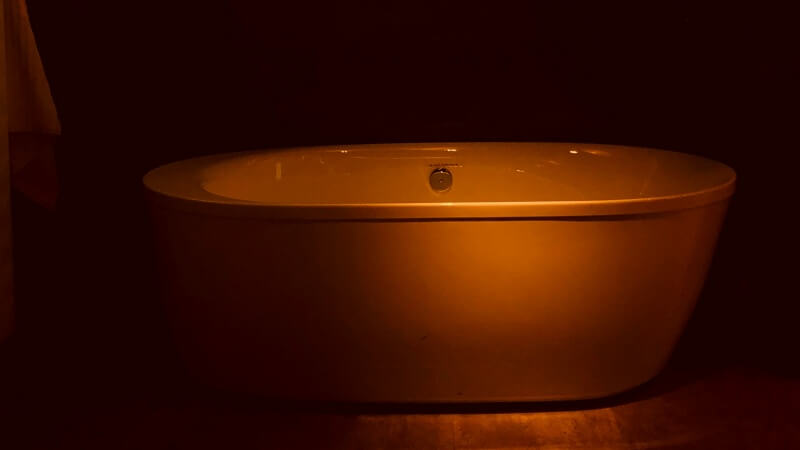
DIY Crafting A Cover For Your Portable Bathtub: A Creative Guide
Do you ever wish your portable bathtub had a bit more pizzazz or perhaps some added privacy? Well, you’re in luck! Crafting a DIY cover

Getting ready for your first ice bath? Cold immersion, known for boosting immunity, metabolism, fat loss, and mood, is gaining popularity.
As the weather warms up, you might be considering trying an ice bath or cold shower.
Here are some tips to make your first experience with cold immersion enjoyable and something you’ll want to repeat. Remember, it’s about gradually introducing your body to the cold and understanding the benefits to make it a sustainable practice.
Getting used to cold showers is important. Regular cold showers prepare you for the body’s reactions to extreme cold, like in ice baths.
This preparation makes ice baths more enjoyable and allows you to stay in the cold longer, building up your comfort with the practice.
Choosing the right temperature for cold immersion is about finding a balance.
You want it cold enough to challenge you but not so cold that it becomes too difficult to maintain as a regular practice.
While typical ice baths range from 38°F to 45°F, a good starting point is between 45°F and 52°F.
This range is uncomfortable but manageable, allowing you to gradually increase your time spent in the cold.
Setting up your first ice bath doesn’t require a permanent bathtub. Start with a portable tub or visit a spa with a cold plunge.
Fill the tub so you can submerge up to your ears, which helps regulate body temperature quicker.
For a 100-gallon tub, try 60 lbs of ice and about 70 gallons of water. This should achieve a challenging but manageable temperature of around 50 degrees, ideal for beginning cold immersion.
To prepare for cold immersion, it’s beneficial to activate the “rest-and-digest” part of your nervous system and increase nitric oxide production, which relaxes blood vessels for better oxygen delivery.
This can be achieved with specific nasal breathing techniques that you can practice in one session. These techniques help your body to relax and adjust more effectively to the cold.
To prepare for an ice bath, use these breathing techniques:
Slow your breathing to 6 breaths per minute, inhaling and exhaling for 5 seconds each, for 3-5 minutes. This calms your mind and nervous system.
Incorporate a ‘hum’ with each 5-second exhale, following the first technique. This enhances cell oxygenation by increasing nitric oxide production.
After your breathwork, hold your breath for a prolonged time, then exhale fully as you step into the cold. Breathe calmly and steadily once you’re in the cold, aiding your nervous system to adapt to the experience.
Tips: The most crucial aspect is to pay attention to your body’s signals. This means exiting the cold immersion as soon as you begin to shiver, or shortly thereafter.
It’s key to recognize and respect your body’s responses to ensure a safe and beneficial experience.
Aim to stay in a first cold plunge for about three minutes, which is enough to gain key benefits like better blood sugar regulation and increased fat burning.
Gradually work up to longer durations, up to 10+ minutes, depending on the temperature.
However, always prioritize listening to your body and exit the immersion if you start shivering, as this is a crucial safety measure to avoid overstaying in the cold.
Fully submerge your body, including your head, to stimulate a strong hormonal response.
Regularly dipping your face in the water during the plunge further enhances this effect on the nervous system.
Throughout, focus on nasal breathing and remind yourself that the experience becomes more tolerable after the first minute.
This full-body approach ensures you gain the full benefits of the cold immersion.
After a cold immersion, it’s generally beneficial to let your body naturally return to its regular temperature.
This process is metabolically active, aiding in fat burning and improving metabolic health. This approach is recommended for regular cold showers and most ice baths.
However, occasionally combining an ice bath with a sauna session can be very healthy, providing a balance of cold and heat exposure.
Hope you will enjoy your first ice bath with our complete and easy guide. Cold immersion isn’t just for health; it’s a fun, social activity.
Our events focus on laughter and building connections. The practice offers numerous benefits and isn’t meant to be difficult.
It often leads to feeling more alert and energized, and many people come to enjoy it over time.
If you found this article useful, you might also be interested in – What Does Apple Cider Vinegar Bath Do For Females?


Do you ever wish your portable bathtub had a bit more pizzazz or perhaps some added privacy? Well, you’re in luck! Crafting a DIY cover

Have you ever longed for extra comfort in your portable bathtub? Imagine enhancing your bathing experience with custom-made chairs and loungers tailored just for you.

When it comes to adding a personal touch to your home, your portable bathtub should not be an exception. This post will guide you through

Imagine stepping into your portable bathtub and finding the water temperature just perfect – every single time. This isn’t just a dream; it’s entirely achievable

Do you ever wish your portable bathtub had a bit more pizzazz or perhaps some added privacy? Well, you’re in luck! Crafting a DIY cover

Have you ever longed for extra comfort in your portable bathtub? Imagine enhancing your bathing experience with custom-made chairs and loungers tailored just for you.

When it comes to adding a personal touch to your home, your portable bathtub should not be an exception. This post will guide you through

Imagine stepping into your portable bathtub and finding the water temperature just perfect – every single time. This isn’t just a dream; it’s entirely achievable
Copyright © 2024 batheportablebathtub. All Rights Reserved.